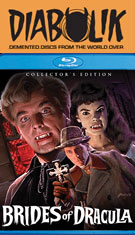
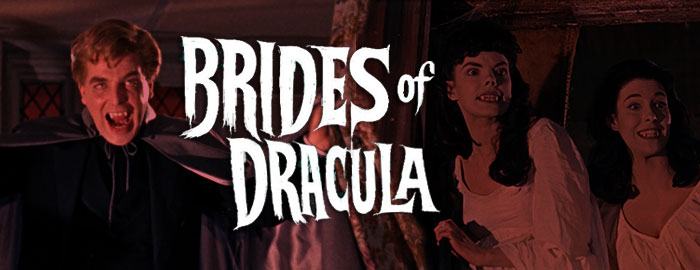
Color, 1960, 85 mins. 34 secs.
Directed by Terence Fisher
Starring Peter Cushing, David Peel, Freda Jackson, Yvonne Monlaur, Andrée Melly, Martita Hunt
Scream Factory (Blu-ray) (US RA HD) / WS (1.85:1, 1.66:1) (16:9),, Anolis (Blu-ray) (Germany RB HD) / WS (1.78:1) (16:9), Final Cut (Blu-ray & DVD) (UK RB/R2 HD/PAL), Universal (Blu-ray & DVD) (US R0 HD/NTSC) / WS (2.00:1) (16:9)
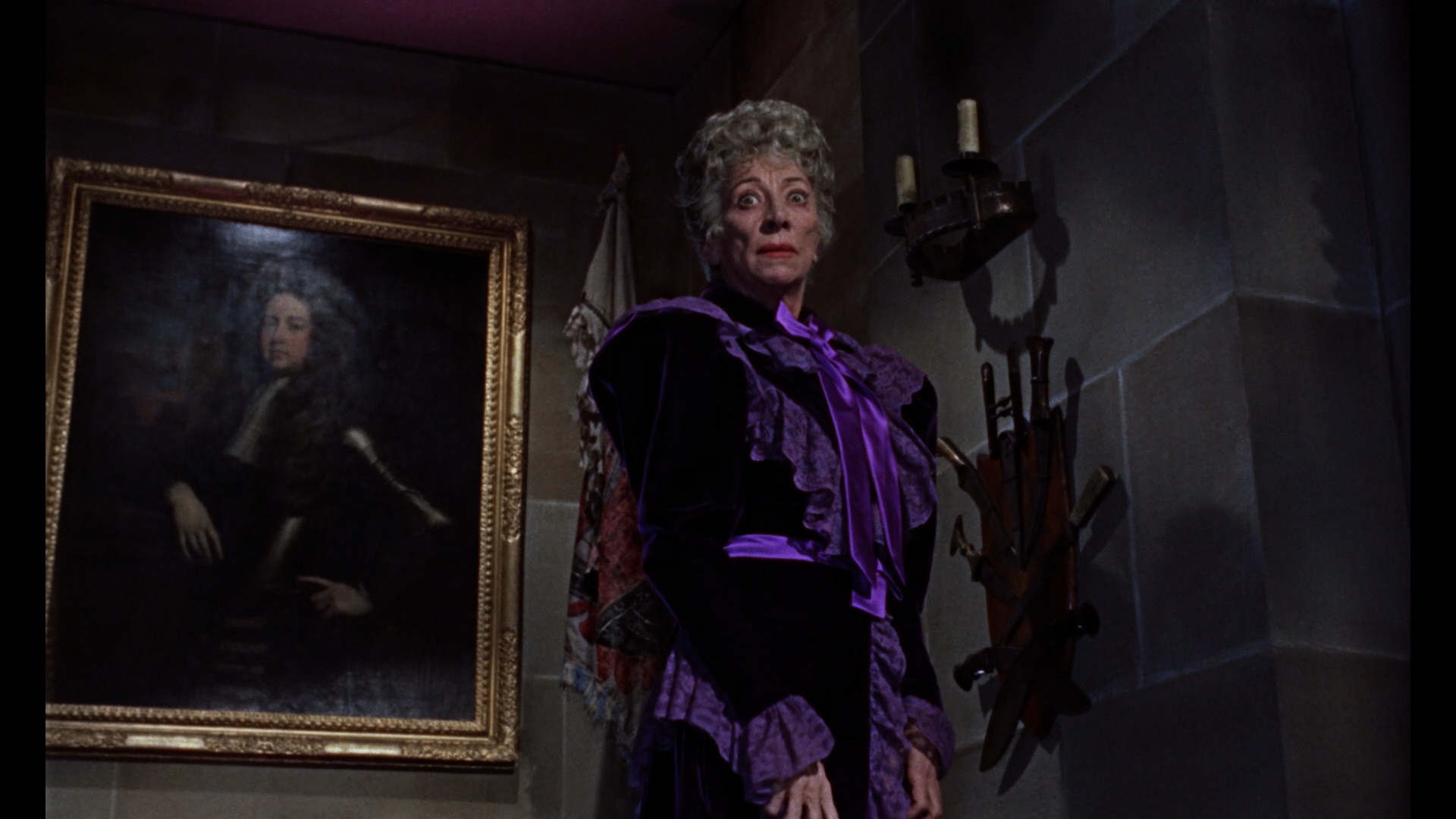 three big hits in a row near
three big hits in a row near 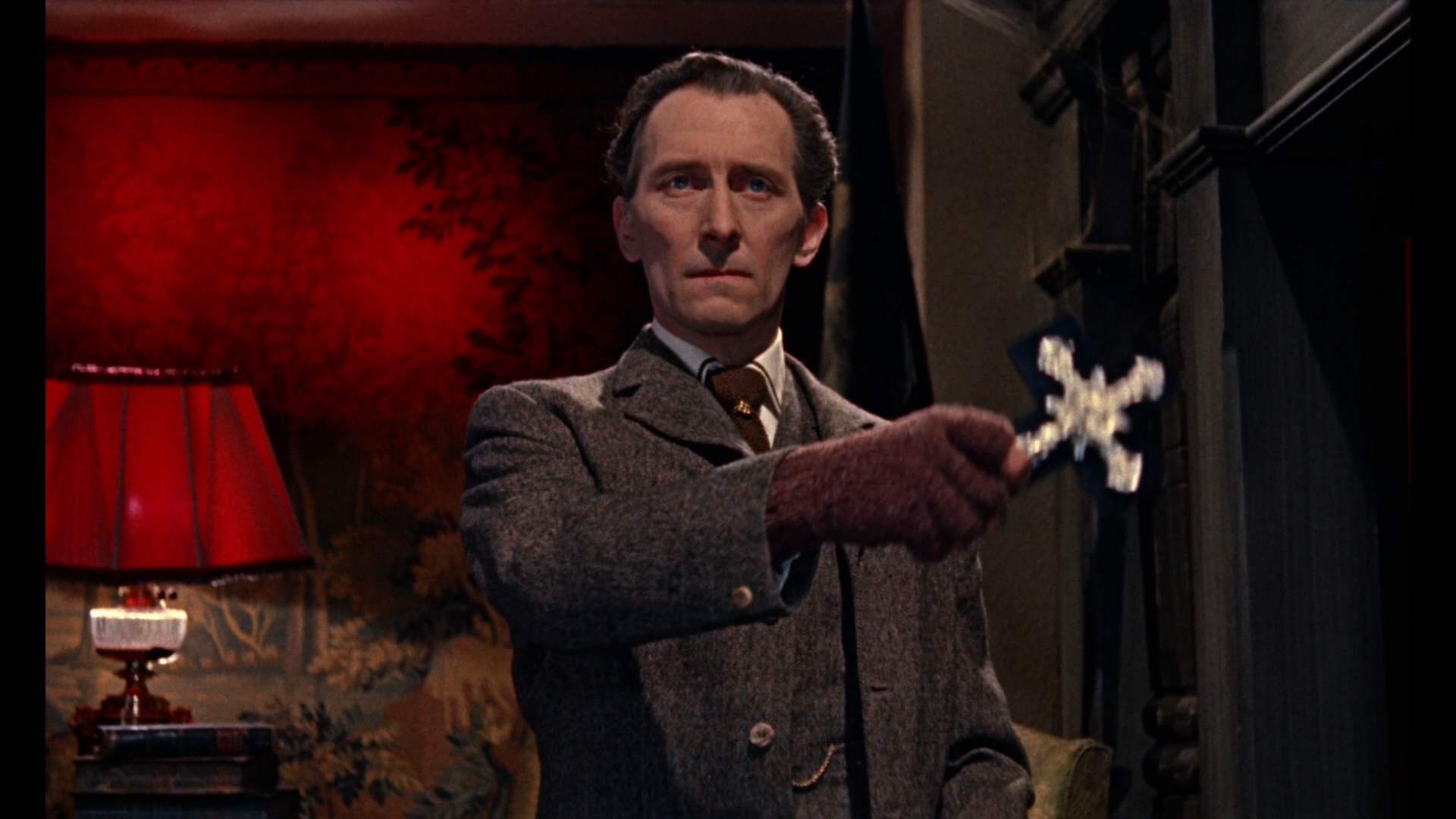 the end of the 1950s with The Curse of Frankenstein, Horror of Dracula, and The Mummy, all starring Peter Cushing and Christopher Lee, Hammer Film Productions was eager to keep the public enthralled with more monster adventures featuring its flagship creatures. As with 1958's The Revenge of Frankenstein, Lee was refraining from playing monsters for a while at the studio and necessitated creative ways to continue the story with Cushing in the lead. It's a testament to everyone involved including returning director Terence Fisher that the sequel turned out to be another masterpiece, cleverly using fragments of a Jimmy Sangster script, Disciple of Dracula, to bring back Van Helsing fighting vampires in the wake of the events from the prior film.
the end of the 1950s with The Curse of Frankenstein, Horror of Dracula, and The Mummy, all starring Peter Cushing and Christopher Lee, Hammer Film Productions was eager to keep the public enthralled with more monster adventures featuring its flagship creatures. As with 1958's The Revenge of Frankenstein, Lee was refraining from playing monsters for a while at the studio and necessitated creative ways to continue the story with Cushing in the lead. It's a testament to everyone involved including returning director Terence Fisher that the sequel turned out to be another masterpiece, cleverly using fragments of a Jimmy Sangster script, Disciple of Dracula, to bring back Van Helsing fighting vampires in the wake of the events from the prior film.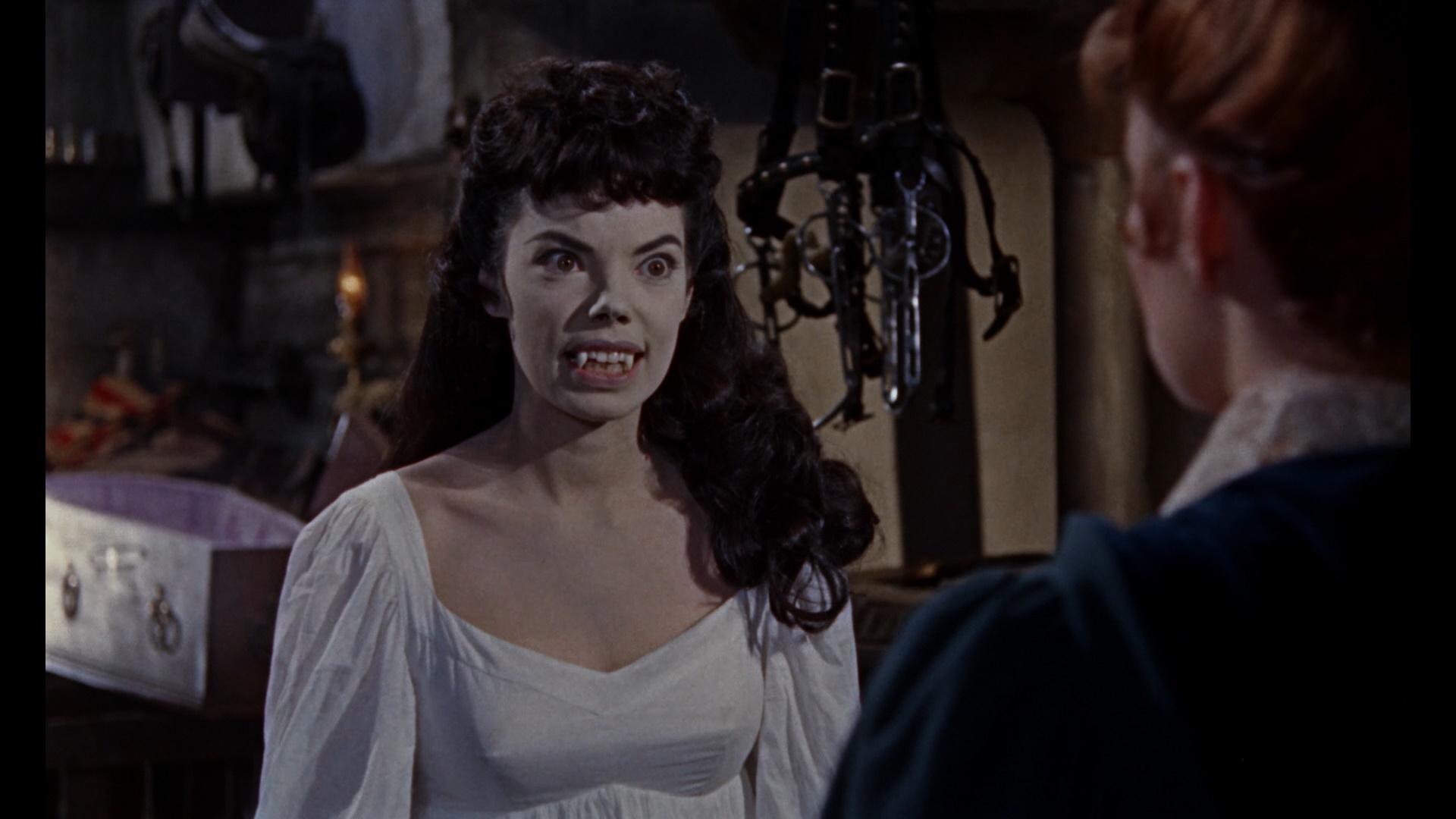 However, this is really Cushing's show once the star appears at the half-hour mark and dominates the film through a
However, this is really Cushing's show once the star appears at the half-hour mark and dominates the film through a 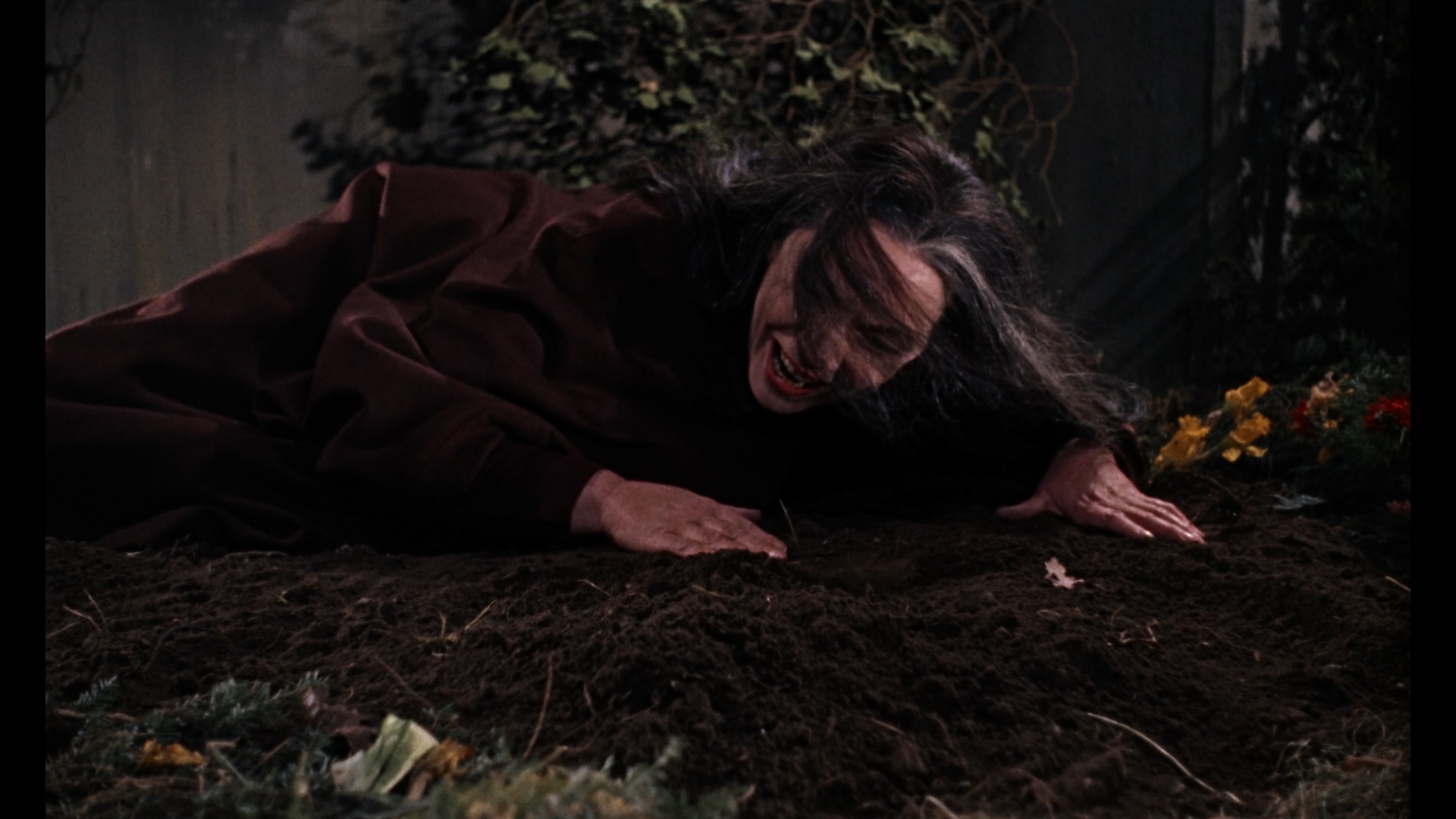 slew of great set pieces including a terrific "birth" sequence that can still induce shivers. Composer James Bernard sat this one out with composer Malcolm Williamson grabbing the reins instead, but he does well here with a brash, evocative score that provides able support.
slew of great set pieces including a terrific "birth" sequence that can still induce shivers. Composer James Bernard sat this one out with composer Malcolm Williamson grabbing the reins instead, but he does well here with a brash, evocative score that provides able support. 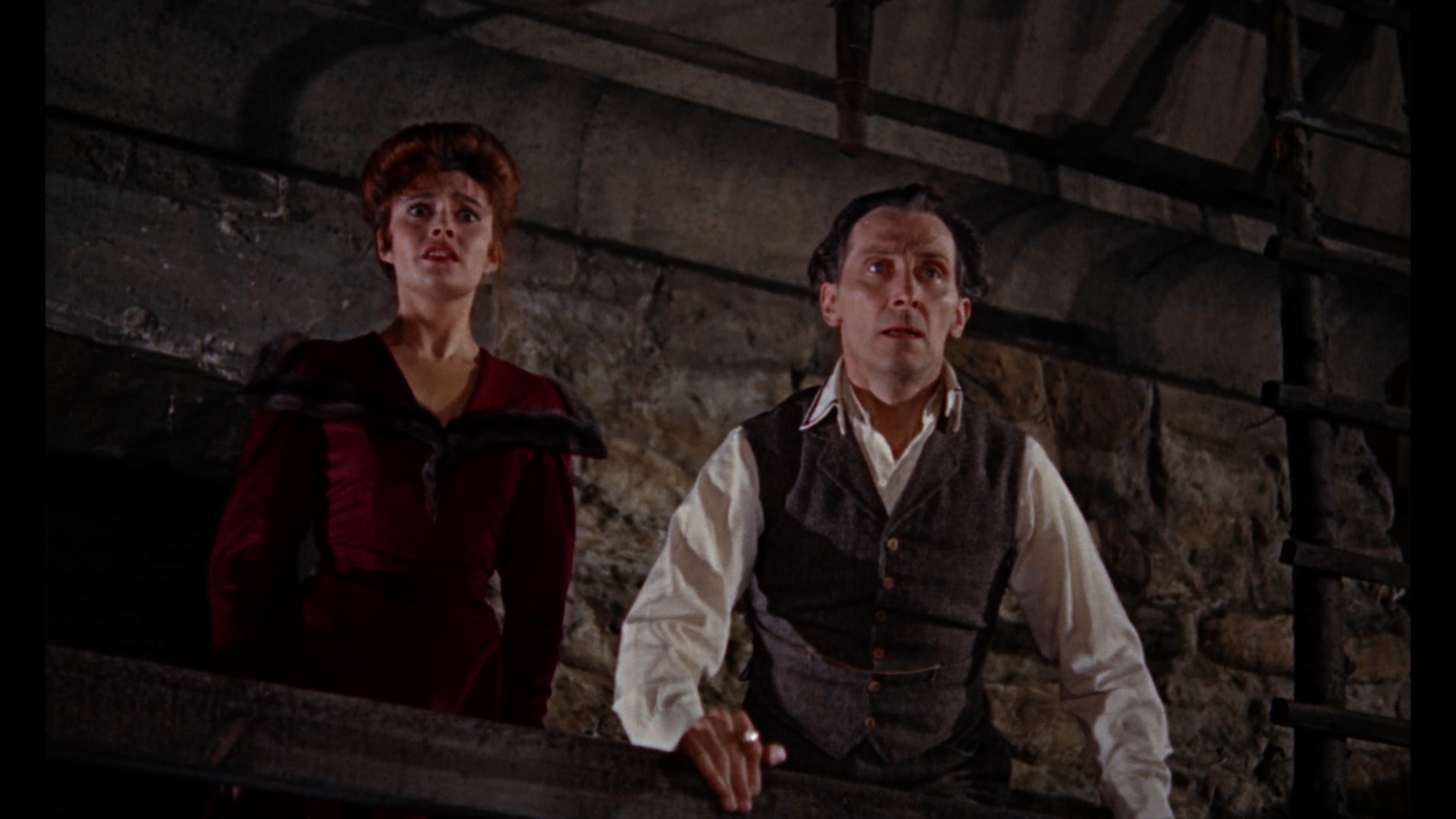 to what we've
to what we've 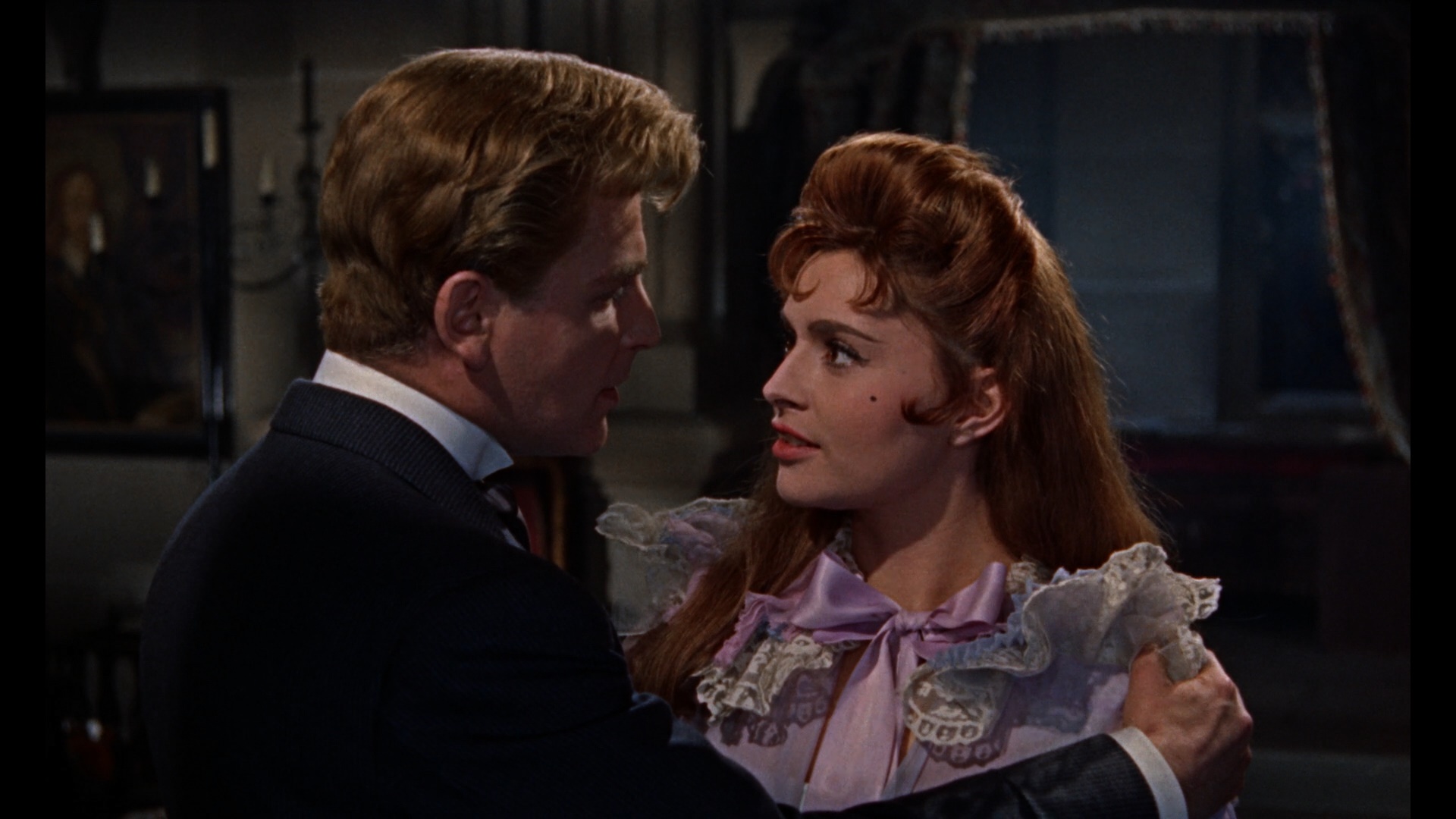 seen before which would indicate it was probably scanned from the same material, but this is the one to beat in terms of detail, framing, and overall presentation. As always, the colors here look lustrous with those red accents in particular really popping off the screen. The edge enhancement that plagued earlier editions is also gone, resulting in more natural film grain and detail that doesn't look like the sharpness has been cranked a few notches too high. As with many previous Scream Factory Hammer sets that offered dual aspect ratios, the 1.85:1 gets a DTS-HD MA English 2.0 mono track while the 1.66:1 is Dolby Digital mono (both with optional English SDH subtitles). The difference between the two isn't particularly significant, but it's worth noting for audiophiles. The 1.85:1 version also comes with a new audio commentary by the go-to team of Steve Haberman and Constantine Nasr, who deliver another in-depth, comprehensive commentary about the film's production, its tricky place coming on the heels of a bona fide classic, and various literary and cultural allusions ranging from Little Red Riding Hood and Bluebeard to Suddenly, Last Summer. Little Shoppe of Horrors' Richard Klemensen serves as your guide for two new featurettes, "The Men Who Made Hammer: Terence Fisher" (58m21s) and "The Men Who Made Hammer: Jack Asher" (16m24s), both of which are packed with info about the director and cinematographer with a healthy sampling of production photos and other material supporting these appreciative looks at what both men brought to the Hammer table in its early horror days. The Asher one is especially revelatory with Klemensen talking about his own communications with him and his unfortunate perception that his work didn't amount to anything after his retirement. In "The Eternal and the Damned" (15m22s), David Huckvale offers another of his insightful analyses of Hammer music focusing this time on Williamson's score, complete with piano demo deconstructions of his primary themes and a look at how he brought his own flourishes to the formula established by James Bernard. Seen earlier on Severin's release of And Now the Screaming Starts, "The Haunted History Of Oakley Court" (15m13s) features David Flint and Allan Bryce chatting about the history of the oft-filming location that appeared in numerous British productions including several Hammer and Amicus titles. Also included are the making-of Final Cut featurette, two trailers, a radio spot, and a still gallery (7m26s). A limited number of orders placed directly through Scream Factory also come with a poster featuring the striking new artwork created by Mark Maddox.
seen before which would indicate it was probably scanned from the same material, but this is the one to beat in terms of detail, framing, and overall presentation. As always, the colors here look lustrous with those red accents in particular really popping off the screen. The edge enhancement that plagued earlier editions is also gone, resulting in more natural film grain and detail that doesn't look like the sharpness has been cranked a few notches too high. As with many previous Scream Factory Hammer sets that offered dual aspect ratios, the 1.85:1 gets a DTS-HD MA English 2.0 mono track while the 1.66:1 is Dolby Digital mono (both with optional English SDH subtitles). The difference between the two isn't particularly significant, but it's worth noting for audiophiles. The 1.85:1 version also comes with a new audio commentary by the go-to team of Steve Haberman and Constantine Nasr, who deliver another in-depth, comprehensive commentary about the film's production, its tricky place coming on the heels of a bona fide classic, and various literary and cultural allusions ranging from Little Red Riding Hood and Bluebeard to Suddenly, Last Summer. Little Shoppe of Horrors' Richard Klemensen serves as your guide for two new featurettes, "The Men Who Made Hammer: Terence Fisher" (58m21s) and "The Men Who Made Hammer: Jack Asher" (16m24s), both of which are packed with info about the director and cinematographer with a healthy sampling of production photos and other material supporting these appreciative looks at what both men brought to the Hammer table in its early horror days. The Asher one is especially revelatory with Klemensen talking about his own communications with him and his unfortunate perception that his work didn't amount to anything after his retirement. In "The Eternal and the Damned" (15m22s), David Huckvale offers another of his insightful analyses of Hammer music focusing this time on Williamson's score, complete with piano demo deconstructions of his primary themes and a look at how he brought his own flourishes to the formula established by James Bernard. Seen earlier on Severin's release of And Now the Screaming Starts, "The Haunted History Of Oakley Court" (15m13s) features David Flint and Allan Bryce chatting about the history of the oft-filming location that appeared in numerous British productions including several Hammer and Amicus titles. Also included are the making-of Final Cut featurette, two trailers, a radio spot, and a still gallery (7m26s). A limited number of orders placed directly through Scream Factory also come with a poster featuring the striking new artwork created by Mark Maddox. Scream Factory (Blu-ray) (1.85:1)
Scream Factory (Blu-ray) (1.66:1)
Anolis (Blu-ray)
Universal (Blu-ray)
![]()